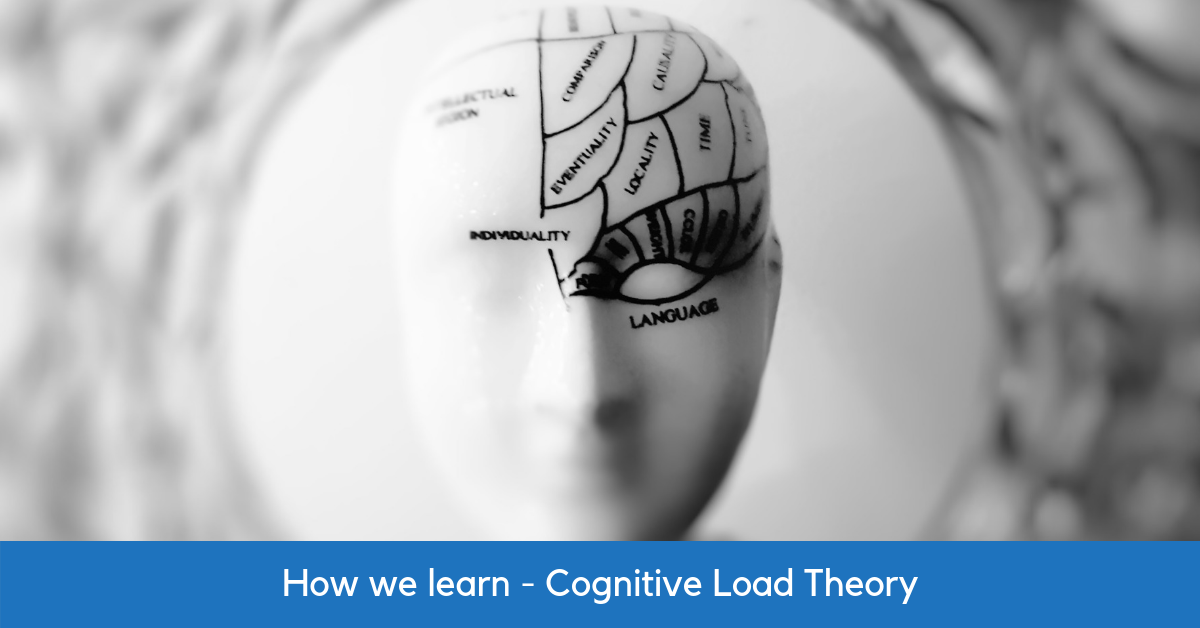I have recently come to a shocking conclusion, I do not know how learning happens. I know how to learn, I can tell you when learners did not learn and sometimes I can even tell you when they did actually learn something. But I have never really thought about what is happening when you learn. And as a teacher, learning is my trade.
I decided to fix this problem and went down a fascinating rabbit hole of research and theories. The first thing I learnt was that nobody seems to know exactly how we learn. There are lots of theories around, all explaining part of the process, but not the process as a whole. The second thing I learnt is that you have to go about these theories carefully, after all they are just theories.
Cognitive Load Theory in 100 words
Cognitive Load Theory is based on the principle that thinking and learning takes place in your working memory, and to learn something new or really engage with a problem you need space in your working memory. The problem is that our working memory is rather limited, everyone has similar capacity, but unfortunately there isn’t much you can do to increase it. The only way you can free up space in your working memory is by grouping previous knowledge in schemas and making basic processes automatic. At the same time, you need to limit the distractions that clog up your working memory.
What does it mean for your classroom?
If your brain goes into cognitive overload, learning doesn’t take place. You might still be able to do the work, you might even get it correct occasionally, but it is unlikely that you will remember much of it or learn from the experience. Since the working memory is said to be limited to about 7 elements at any given time, once it is full, you will start making mistakes or go blank, unless some elements from your working memory are eliminated. Imagine your working memory as an internet browser that can only run 7 tabs at any given time. Once seven tabs are open, you can’t open a new one until you have closed one of the open tabs, otherwise, your computer, or brain in this case, will freeze.
Have you ever struggled to do a sum in front of the class, only to get it right the moment you sit down at your desk? When in front of the class you are running several “tabs” at the same time. While you are doing the sum, you are talking through your steps and reading to the class to see if they are following, this, all whilst wondering what little Johnny in the back corner is doing No wonder you feel like you can’t think – your brain is in cognitive overload.
How do you prevent cognitive overload?
When we are talking about your cognitive load, it is important to remember that when you are confronted with something new (let’s call you a novice), the cognitive load is a lot higher than when you are familiar with it (let’s call you an expert). Therefore the cognitive load of something will be different for different learners and may appear at various times. For example, a quadratic equation will carry a high load to a grade 9, but the same sum will have a fairly small cognitive load to a Matric learner.
But how do you lower the cognitive load without making the work easier? Willingham (2003) said that “memory is the residue of thinking”, so you don’t want to lower the cognitive load of the topic they are learning, you want to lower the load of everything else. You also don’t want to lower it too much, then they will just fill that capacity thinking about other things.
I used to use as many different numbers as possible when I introduced my grade 9’s to quadratic equations, now I use examples with similar numbers. I will start the lesson by talking about factor pairs and write the factors of the numbers we are going to use on the board so that we do not need to think about it again. This way their working memory is not filled by finding factors when I really just want them to learn how the signs affect the answer.
You might feel that I am lowering my standards, but we are talking novices here. Once they are familiar with the concept, have assimilated it into their existing memory schemes and it becomes automatic to them, I increase the load by giving them more complex problems. The trick is to manage the cognitive load at each stage of the process.
Cognitive Load Theory has too many aspects and applications to cover them all in one article, but I hope that this taster could pique your interest. In the next edition, I will look at some other learning theories.
This article originally appeared in the Teacha! Magazine. Take a look at our latest magazine here.
Renate Röhrs, Butterfly Classrooms



